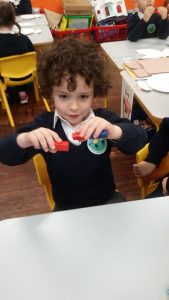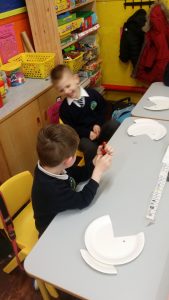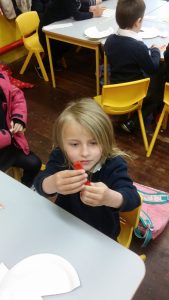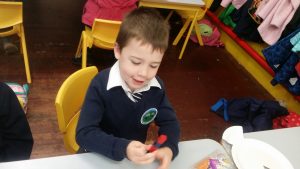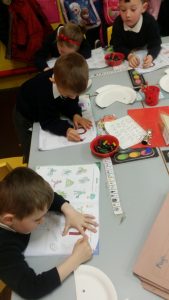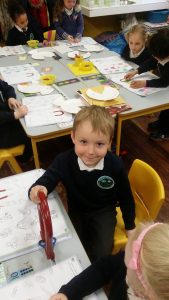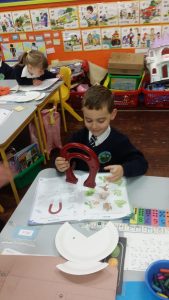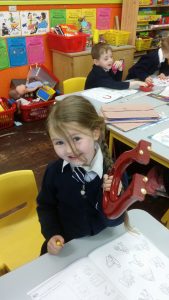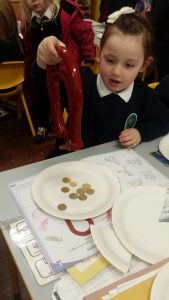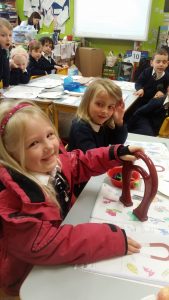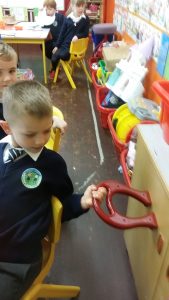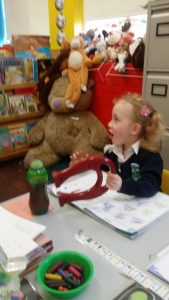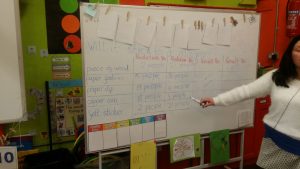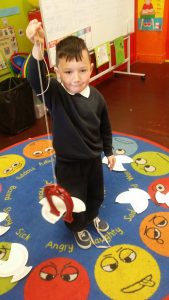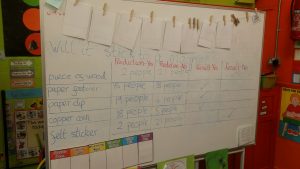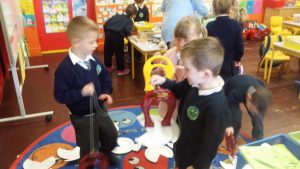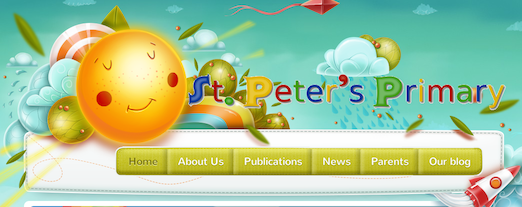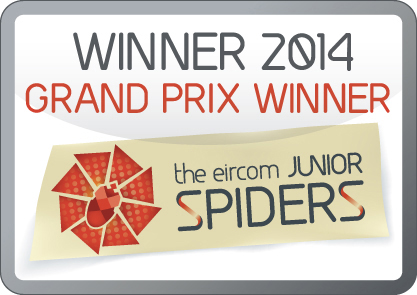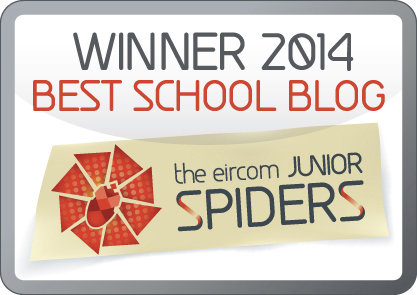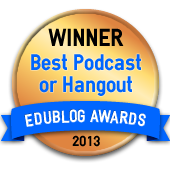Junior infants learned that pushing and pulling were a force. We then learned that there was another invisible force called “magnetic force.”
We learned that magnets attract some materials. We learned that these materials are made of metal. We also learned that magnets have two poles, the north pole is red and the south pole is blue.
We had some investigations to do:
We would find out that poles that were the same repelled each other and poles that were different attracted each other.
We would also find out which materials were attracted to magnets!
The work in our books asked us to check which objects and materials are attracted to a magnet and which are not.
Heidi pointed out that part of the scissors is metal and sticks to a magnet, the handles are plastic and do not stick to a magnet.
Next it was time to record in our books what we have found out.
Next, we got to go fishing with magnets! We made fish out of paper plates. We stuck various materials on the mouths of the fish, some of them were magnetic, some of them were not magnetic. Then, we tied pieces of string to magnets and used them as a fishing line!
If we caught a fish, it meant that the material in it’s mouth stuck to a magnet!
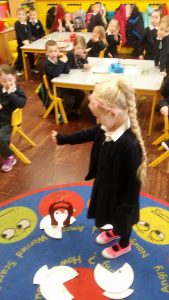
There was a piece of wood in the mouth of this fish. We couldn’t catch the fish! Therefore wood is not a metal and does not stick to a magnet!
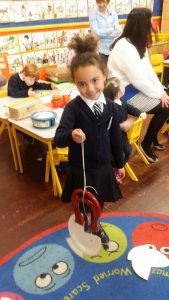
There was a paper fastener in the mouth of this fish. We caught the fish! Therefore it is made of metal and sticks to a magnet!
We made predictions about whether or not a certain material would stick to a magnet (could we catch the fish?!) We learned a little bit about data and recorded our predictions and then our results.

